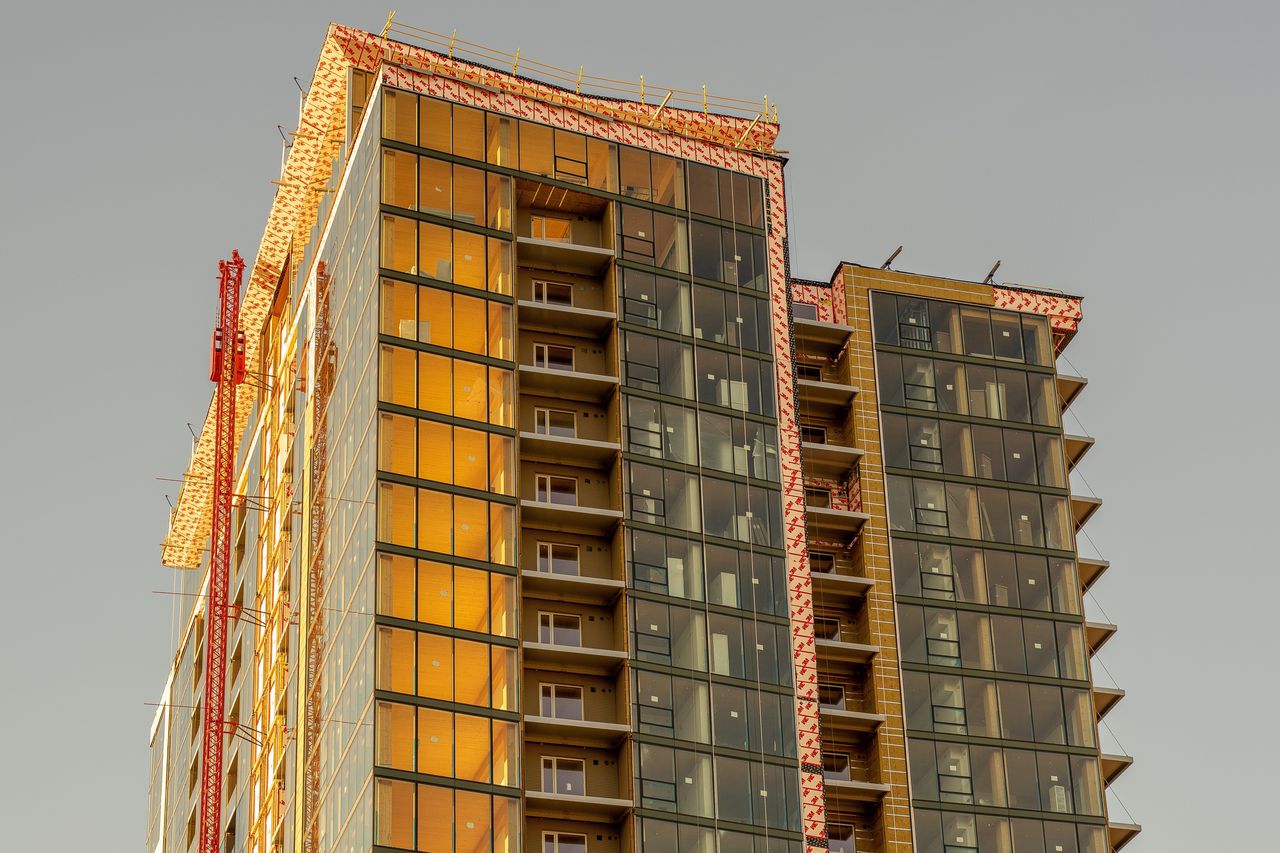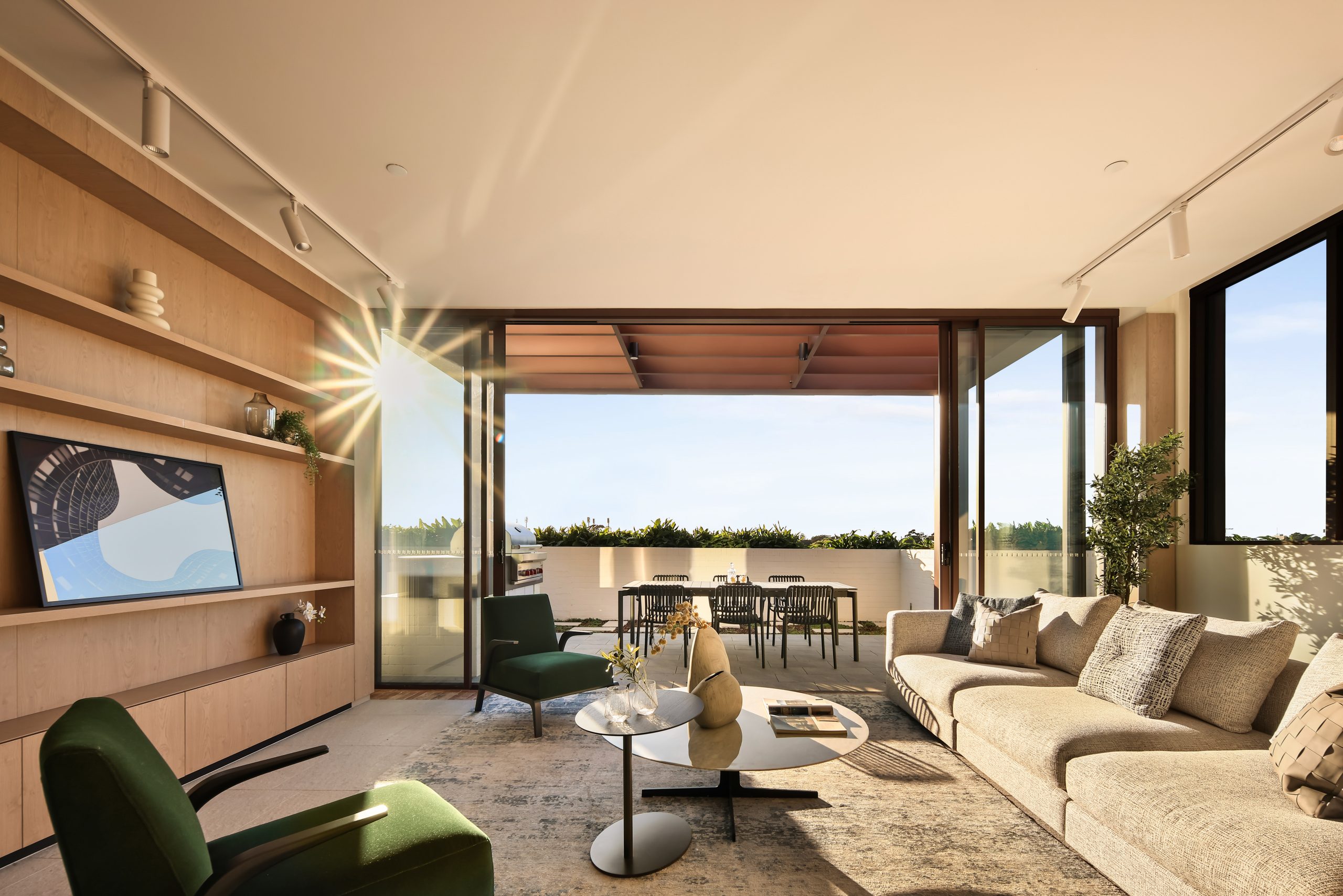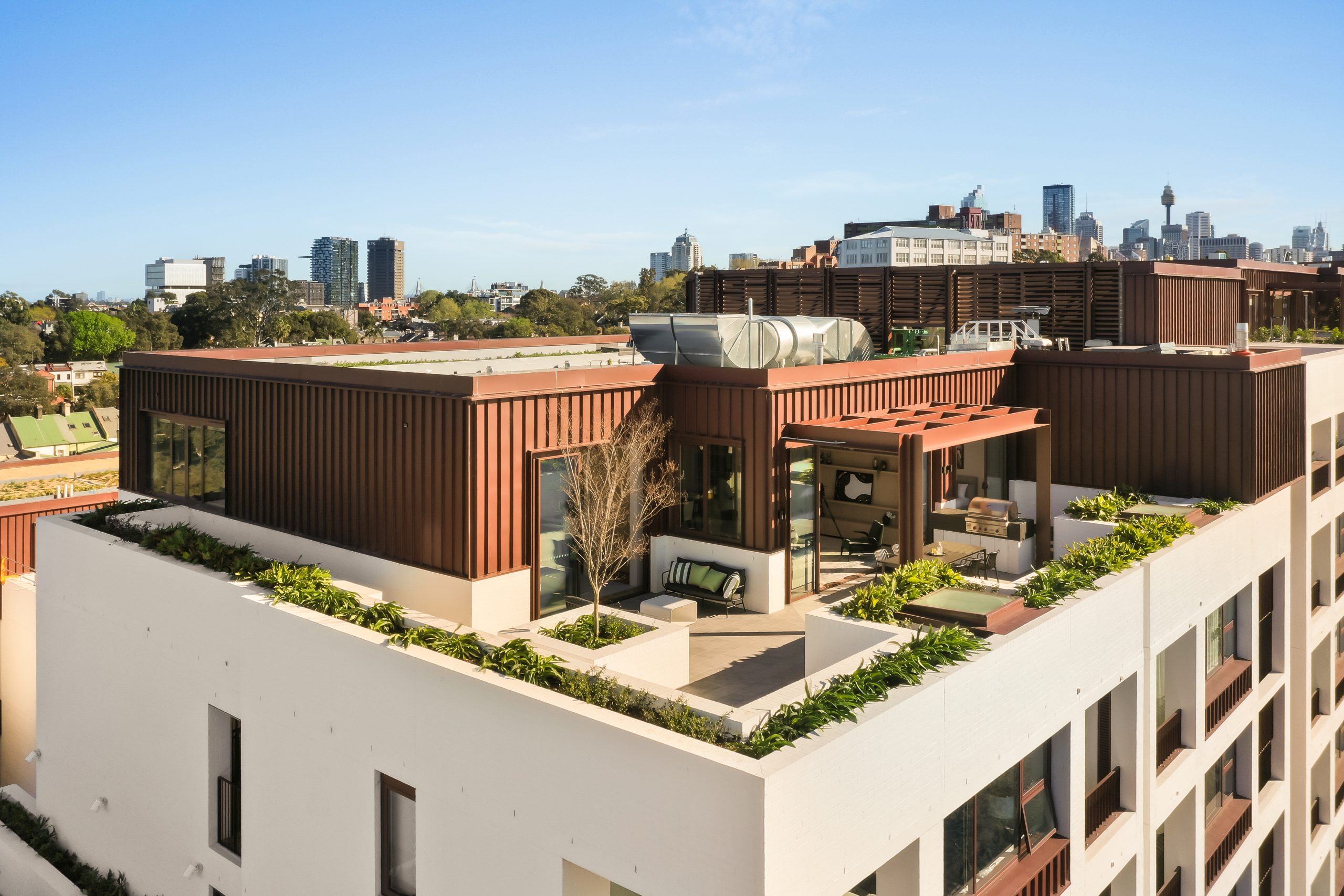Wooden Skyscrapers Are On The Rise
Architects and builders turn to ‘mass timber’—an engineered wood product similar in strength to concrete and steel—to build multistory buildings.
Guests at a new 20-storey hotel and cultural centre in Skellefteå, a former gold-mining community in northeastern Sweden, don’t have to step outside to feel immersed in the natural world. The floors, ceilings and support beams of the building—which also houses a museum and other facilities—are made almost entirely of spruce and pine harvested from nearby woodlands.
“When you come inside, the smell of the timber is almost like you enter a forest,” Robert Schmitz, a partner at an architectural firm in Stockholm and the building’s lead architect, says of the Sara Cultural Centre and Wood Hotel. “This is a really small city, and timber is something that everyone in this community has a connection to. They understand the material.”
The 30,000-square-metre complex is part of an emerging trend as architects, developers and builders turn to so-called mass timber, wood that is glued and pressed in special ways to make it similar in strength to concrete and steel and thus capable of replacing those building materials even for skyscrapers and other massive edifices.
Advocates of mass-timber construction maintain that it can be more environmentally friendly than conventional construction. The carbon footprint of a building constructed with sustainably harvested mass timber, which is made from trees that are selectively cut rather than clear-cut, can be half that of a similar building made of concrete and steel, according to an assessment of mass timber construction published recently in the journal Sustainability.
“If you look at the carbon impact of harvesting trees and turning them into buildings, it gives you a much better number than you get from concrete or steel,” says Stephen Shaler, a professor of sustainable materials and technology at the University of Maine. “As long as you have sustainably managed forests—and we have that capacity—it is a clear winner on the carbon footprint.”
The number of multistorey mass-timber buildings being built in the U.S. rose 50% between July 2020 and December 2021 to more than 1,300 structures, according to the wood trade group WoodWorks. Among the projects are an eight-storey office building in Charlottesville, Va., a new Google five-stoery office building scheduled to open in August in Sunnyvale, Calif., and a 25-storey residential-retail complex rising in Milwaukee. The International Building Code permits wooden buildings of up to 18 stories, but the developers of the Milwaukee project say they obtained a variance after submitting data to city officials showing it was as safe as a conventional building.
Even more ambitious projects may appear: A Japanese timber company has proposed a 70-story wood building for Tokyo, while a U.K.-based architectural firm has plans for an 80-story skyscraper in London.
To meet the demand for mass timber, 18 manufacturing plants have been built in the U.S. and Canada since 2014, according to the U.S. Forest Service. The global market for mass timber was estimated at $956 million in 2020 and is expected to grow at an annual rate of 13.6% from 2021 to 2028, according to a December 2021 report by Grand View Research.
In addition to potential environmental benefits, construction experts say mass-timber buildings can cost less than concrete-and-steel structures—especially if they’re sited near a manufacturing plant where pieces of the building are cut to order. With mass timber, for example, builders don’t have to pour concrete and wait for it to set. Mr. Schmitz and the team behind the Sara Cultural Centre say they saved a year in construction and labor costs as the wood panels and beams were made at a nearby plant.
Using mass timber cut the timeline for the Milwaukee complex, called Ascent, by about four months, says Tim Gokhman, managing director of the Milwaukee-based New Land Enterprises and the project’s manager. Because wood is lighter, only 100 support piles had to be driven into the site’s soft soil rather than the 200 that would have been needed for a similar concrete-and-steel building. And whereas pouring concrete floors might require 30 to 40 workers, he said, only 10 workers were needed to install the cross-laminated timber, or CLT, panels for each floor.
CLT is made by laying down and gluing together multiple wooden pieces oriented at 90-degree angles to one another and is commonly used for floors and walls. Another key type of mass timber, called glulam for glue-laminated timber, is commonly used for support beams.
“Each piece of wood is measured and has a designated place,” Mr. Gokhman says. “So as the building is built, you’re literally updating its progress in a digital world. Without that technology, you don’t have the same efficiency and schedule gains.”
Some point to limitations of mass timber, saying that buildings made with both conventional and mass-timber construction can have advantages over those made solely of wood or solely of steel and concrete.
“In a tall building, you really do want the base of it to be concrete, and as you go up in the building it gets lighter, and makes more use of wood,” says University of Oregon architecture professor Judith Sheine, who has designed buildings using both mass timber and concrete and steel. And conventional construction might be better in coastal areas, she says, adding, “If you’re in a flood zone, the base should still be concrete because getting wood wet is not that great.”
Some fear the mass-timber trend could spur timber companies to cut down old-growth forests that contain large amounts of carbon rather than selectively harvesting younger forests. They argue that calculations of the carbon footprints of mass timber buildings must include roots, branches and other parts of trees that are often burned as well as the fossil fuels consumed to cut down the trees, fabricate the wood products and transport them to construction sites.
“We’re not going to log our way out of the climate crisis,” says Jason Grant, manager of corporate engagement, forests, for the World Wildlife Foundation in San Francisco. “There are objective limits to how much timber we can produce and consume. We need to bear in mind the constraints that we need to operate in if we want to avoid climate disaster and stem nature loss.”
Seismic testing of a 10-storey tall wooden building scheduled to take place in California this fall could give a boost to the mass-timber trend. “We need to find a way to make these buildings earthquake-resistant, since it’s a new building type, and nobody’s ever done this before,” says Shiling Pei, associate professor of civil and environmental engineering at the Colorado School of Mines and the project leader for the shake test.
To minimize the risk of fire, builders and architects are incorporating precautions into mass timber buildings, says David Barber, a Washington, D.C.-based fire safety engineer with the multinational design, engineering and architectural firm Arup. He points to covering CLT wall and floor panels in taller mass timber buildings with fire-rated drywall rather than leaving them exposed, for example, and checking the fire rating for connection points between the timber panels as well as the glue connecting the panels and laminated timber.
“We want to make sure that the buildings are done in very conservative ways, so they are being designed to a very high level of safety,” says Mr. Barber, who has worked on both the Ascent building in Milwaukee and the eight-storey Apex building in Charlottesville.
Tests of a two-storey mass timber apartment conducted in 2017 at a Bureau of Alcohol, Tobacco and Firearms facility in Beltsville, Md., showed that it took longer to catch fire and retained its structural integrity longer than a similar wood-frame structure.
 Copyright 2020, Dow Jones & Company, Inc. All Rights Reserved Worldwide. LEARN MORE
Copyright 2020, Dow Jones & Company, Inc. All Rights Reserved Worldwide. LEARN MORE
This stylish family home combines a classic palette and finishes with a flexible floorplan
Just 55 minutes from Sydney, make this your creative getaway located in the majestic Hawkesbury region.
A Sydney site with a questionable past is reborn as a luxe residential environment ideal for indulging in dining out
Long-term Sydney residents always had handful of not-so-glamourous nicknames for the building on the corner of Cleveland and Baptist Streets straddling Redfern and Surry Hills, but after a modern rebirth that’s all changed.
Once known as “Murder Mall” or “Methadone Mall”, the 1960s-built Surry Hills Shopping Centre was a magnet for colourful characters and questionable behaviour. Today, however, a $500 million facelift of the site — alongside a slow and steady gentrification of the two neighbouring suburbs — the prime corner property has been transformed into a luxury apartment complex Surry Hills Village by developer Toga Group.
The crowning feature of the 122-apartment project is the three-bedroom penthouse, fully completed and just released to market with a $7.5 million price guide.
Measuring 211sqm of internal space, with a 136sqm terrace complete with landscaping, the penthouse is the brand new brainchild of Surry Hills local Adam Haddow, director of architecture at award-winning firm SJB.
Victoria Judge, senior associate and co-interior design lead at SJB says Surry Hills Village sets a new residential benchmark for the southern end of Surry Hills.
“The residential offering is well-appointed, confident, luxe and bohemian. Smart enough to know what makes good living, and cool enough to hold its own amongst design-centric Surry Hills.”
Allan Vidor, managing director of Toga Group, adds that the penthouse is the quintessential jewel in the crown of Surry Hills Village.
“Bringing together a distinct design that draws on the beauty and vibrancy of Sydney; grand spaces and the finest finishes across a significant footprint, located only a stone’s throw away from the exciting cultural hub of Crown St and Surry Hills.”
Created to maximise views of the city skyline and parkland, the top floor apartment has a practical layout including a wide private lobby leading to the main living room, a sleek kitchen featuring Pietra Verde marble and a concealed butler’s pantry Sub-Zero Wolf appliances, full-height Aspen elm joinery panels hiding storage throughout, flamed Saville stone flooring, a powder room, and two car spaces with a personal EV.
All three bedrooms have large wardrobes and ensuites with bathrooms fittings such as freestanding baths, artisan penny tiles, emerald marble surfaces and brushed-nickel accents.
Additional features of the entertainer’s home include leather-bound joinery doors opening to a full wet bar with Sub-Zero wine fridge and Sub-Zero Wolf barbecue.
The Surry Hills Village precinct will open in stages until autumn next year and once complete, Wunderlich Lane will be home to a collection of 25 restaurants and bars plus wellness and boutique retail. The EVE Hotel Sydney will open later in 2024, offering guests an immersive experience in the precinct’s art, culture, and culinary offerings.
The Surry Hills Village penthouse on Baptist is now finished and ready to move into with marketing through Toga Group and inquiries to 1800 554 556.
This stylish family home combines a classic palette and finishes with a flexible floorplan
Just 55 minutes from Sydney, make this your creative getaway located in the majestic Hawkesbury region.



























